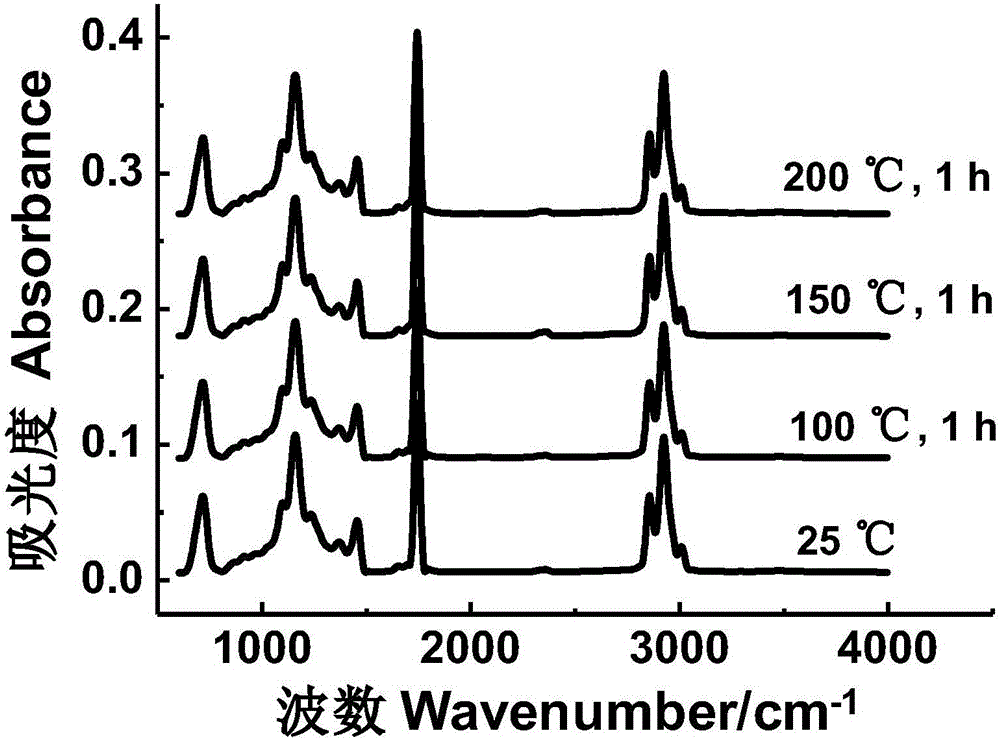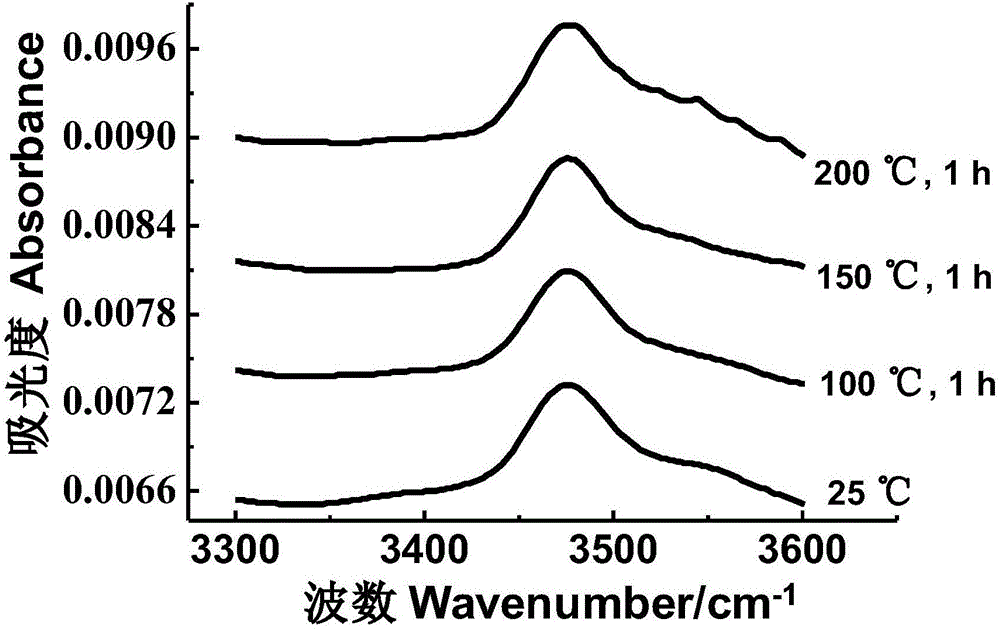Method for rapidly identifying oxidation degree of peony seeds and secondary protein structures
A peony seed oil and secondary structure technology, applied in the field of spectral analysis, can solve the problems of narrow data coverage, large sample consumption, and low sensitivity, and achieve the effects of saving experimental costs, less sample consumption, and strong data convincing
- Summary
- Abstract
- Description
- Claims
- Application Information
AI Technical Summary
Problems solved by technology
Method used
Image
Examples
Embodiment 1
[0021] Embodiment 1: the analysis method of peony seed oil under normal temperature
[0022] A method for rapid identification of oxidation degree and protein secondary structure of peony seed oil, using in situ method for FTIR scanning. The characteristic peak position, absorbance ratio and Gaussian multi-peak fitting analysis were performed on the original spectrum to evaluate the oxidation degree of oil and the percentage of various protein secondary structures.
[0023] The specific operation method is as follows:
[0024] (1) The in-situ FTIR method is used, that is, 20 μL of peony seed oil is dropped on the sample detection platform of the infrared spectrometer (Bruker vertex 70), and the air is used as a reference. -1 Resolution, 128 scans; wave number range is 600-4000cm -1 .
[0025] (2) Analyze the original FTIR data with the help of Origin 8.0 statistical software. First, map the original data to obtain the original FTIR spectrum of peony seed oil at room tempera...
Embodiment 2
[0030] Example 2: Oxidation degree of peony seed oil and protein secondary structure analysis at room temperature
[0031] The method described in Example 1 was used to analyze the degree of oxidation of peony seed oil and the secondary structure of protein at room temperature. FTIR original curve as figure 1 Shown (25℃), at 3470cm -1 There is a narrow absorption peak ( figure 2 ), the RI-RⅢ values were 0.19, 0.34 and 0.16, and the RⅣ value was 1.25 ( image 3 ), indicating that the degree of oxidation of peony seed oil is low at room temperature, and the secondary products produced by oil oxidation are less. Amino I region (1620-1675cm -1 ) of the original curve ( Figure 4 A gray solid line) for Gaussian unimodal fitting, the fitting curve is as follows Figure 4 As shown by the black solid line in A, Gaussian multi-peak fitting is performed on the fitted single peak. Figure 5 The results show that: at room temperature, the protein in peony seed oil has three seco...
Embodiment 3
[0032] Example 3: Analysis of oil oxidation degree and protein secondary structure after peony seed oil was heated at 100°C for 1 hour
[0033] A method for quickly identifying the degree of oxidation of peony seed oil and the secondary structure of protein. The oil of peony seed oil heated at 100°C for 1 hour is used to detect the changes in the degree of oxidation of oil and the secondary structure of protein according to the operation method of Example 1. FTIR original curve as figure 1 Shown (100℃1h), at 3470cm -1 Compared with the peak shape of the absorption peak at room temperature, there is no significant difference ( figure 2 ), the values of RI—RⅢ were 0.19, 0.33 and 0.15, respectively, and the value of RⅣ was 1.26 ( image 3 ), indicating that peony seed oil was oxidized after being heated at 100°C for 1 hour, but the degree of oxidation was low, and the secondary products produced by oil oxidation were less. Amino I region (1620-1675cm -1 ) of the original c...
PUM
 Login to View More
Login to View More Abstract
Description
Claims
Application Information
 Login to View More
Login to View More - R&D
- Intellectual Property
- Life Sciences
- Materials
- Tech Scout
- Unparalleled Data Quality
- Higher Quality Content
- 60% Fewer Hallucinations
Browse by: Latest US Patents, China's latest patents, Technical Efficacy Thesaurus, Application Domain, Technology Topic, Popular Technical Reports.
© 2025 PatSnap. All rights reserved.Legal|Privacy policy|Modern Slavery Act Transparency Statement|Sitemap|About US| Contact US: help@patsnap.com



